Greenfield Ave and Bias Against Poles
It was the northern border of city’s Polish community, which suffered horrible prejudice.
Greenfield Avenue divides Milwaukee County in half. It is twelve miles north of Racine County and twelve miles south of Ozaukee County. An 1845 map drawn by Milwaukee Renaissance man Increase Lapham shows that Greenfield Avenue was originally known as Railroad Street. At that time there were no railroads in the city; that wouldn’t happen for six more years. So, whether the street was named for some future railroad plans that did not happen or just to show enthusiasm for the upcoming mode of transportation is not known.
The street was the northern border of the 36 square mile township of Greenfield which was also bordered by S. 27th Street, W. College Avenue, and S. 124th Street. In the 1880s the community of North Greenfield, at the north end of the township, began to be industrialized and its population was growing. Consequently, in 1885, Railroad Street, which led to North Greenfield, was renamed Greenfield Avenue. Much of the township of Greenfield became part of Milwaukee but the western part of it became West Allis, with Greenfield Avenue as its main business street.
Greenfield Avenue was also the northern border of what was to become Milwaukee’s largest Polish community. Polish immigrants to Milwaukee probably suffered more bigotry and prejudice than any other immigrant group that arrived in the city in the 19th century.
The newspaper wrote of “Polack workers,” “Polack laborers,” “Polack men,” “Polack women,” “poor Polacks,” “a crazy Polack,” “Polack children,” “little Polack boys,” and “little Polack girls.” Even infants were not immune. A south-side politician was ridiculed for “kissing Polack babies.” When Michael Degen died of sunstroke even then the Sentinel was not respectful, calling him “a Polack laborer.” Letters to the Sentinel complained about the newspaper’s use of the derogatory term and recommended that it be replaced by the word “Pole,” but the slurs continued to be printed.
The Sentinel’s war on the city’s second largest ethnic group did not end with name calling. An editorial in the newspaper declared they were a “large body of very ignorant and illiterate people,” and that “they are hot blooded and impulsive, as is shown by the frequent rows that occur in their churches.”
Another Sentinel complaint was that “they learn English less rapidly than most other immigrants.” Polish immigrants, like their German counterparts, did not embrace English, but it was not because of some learning defect. Both groups were so large that they did not need to learn English. In the Polish neighborhood the butcher, the barber, the store owner, and other businesses that residents came in contact with were run by Polish people who spoke to their customers in their mother tongue. The whole family was preached to in Polish at Sunday Mass. English only made inroads into Polish Catholic churches during the lead up to World War II in the late 1930s.
The men of the community picked up English through their employment at factories in the area, but the women and children had fewer opportunities. A 1911 commission studying Milwaukee’s Polish reported that a large number of women and children could not speak English.
Today, the Polish community has been totally assimilated into the American mainstream, but history is repeating itself. Greenfield Avenue now cuts through a Latino community which suffers some of the same kinds of prejudices, biases, and complaints that the former Polish neighborhood was subject to a century ago.
Greenfield Avenue
Carl Baehr, a Milwaukee native, is the author of Milwaukee Streets: The Stories Behind their Names, and articles on local history topics. He has done extensive historic research for his upcoming book, Dreams and Disasters: A History of the Irish in Milwaukee. Baehr, a professional genealogist and historical researcher, gives talks on these subjects and on researching Catholic sacramental records.
City Streets
-
The Curious History of Cathedral Square
 Sep 7th, 2021 by Carl Baehr
Sep 7th, 2021 by Carl Baehr
-
Gordon Place is Rich with Milwaukee History
 May 25th, 2021 by Carl Baehr
May 25th, 2021 by Carl Baehr
-
11 Short Streets With Curious Names
 Nov 17th, 2020 by Carl Baehr
Nov 17th, 2020 by Carl Baehr


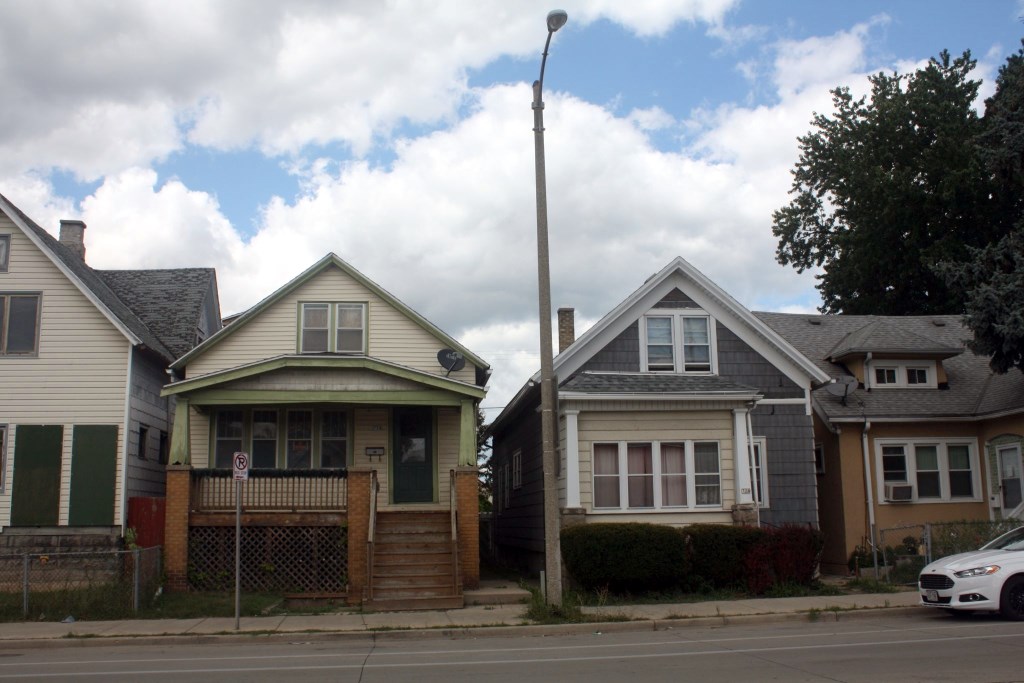
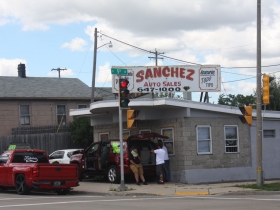
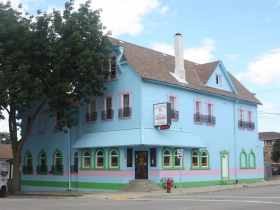
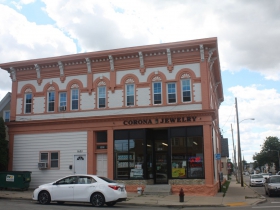
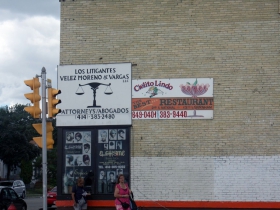
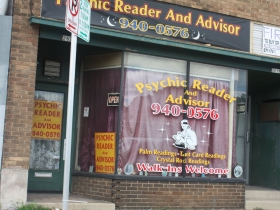
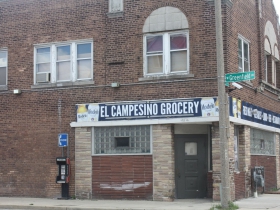




















“they are hot blooded and impulsive, as is shown by the frequent rows that occur in their churches.” – well…it ain’t a lie
[Full Disclosure: I am a quarter Polish, specifically the group that settled in these neighborhoods]
It’s academically humorous, the racial epithets and broad strokes – specifically the once-common phrase “dumb Polack.” Poland now greatly outpaces the US and even the UK in terms of education, wellness, and median IQ, especially the mostly-English Southern US (indeed, removing the most ethnically pure Anglo part of our country raises the national education and health index averages).
[Full Disclosure: I am two-quarters English/Irish, specifically the group that settled in that dire part of our country]
Similar insults about the work ethic and intellectual capacities of the current, mostly Latino and Hmong denizens of these SoGr neighborhoods are frequently heard today. Let’s give it another 50-or-so years and see how the Trump’s remarks on the nature of Hispanic immigrants stands the test of time, eh?
Thank you for writing this article. It really hits home because my great grandparents lived on 2nd and Greenfield. My dad grew up on 5th and Becher and my mom on 21st and Becher. Full disclosure my heritage is 100% south side Milwaukee Polish.
I’d like to add that the commonwealth of Poland technically didn’t exist from 1795 to 1918. It was partitioned three ways to Prussia (later Germany), Russia, and Austria. Russia gained a larger share of Poland (with Warsaw) and the Poles faced confiscation of property, deportation, forced military service, and the closure of their own universities. Russification of Polish secondary schools was imposed and the literacy rate dropped dramatically. In the Austrian portion, Poles fared better, and were allowed to have representation in Parliament and to form their own universities, and Krakow became a center of Polish culture and education. Prussia Germanized the entire school system of its Polish subjects, and had no more respect for Polish culture and institutions than the Russian Empire. Treaty of Versailles re-established Poland.
For 123 years most generations of Poles were desperate to keep their language, culture, and identity alive. Imagine speaking Polish and then having to learn Russian and then maybe visiting family where German is the official language then come to America where there is a new language to learn. Many Polish immigrants grew up in this type of life. It’s pretty clear why Poles stuck together, stayed within their community, kept their language alive, and were apprehensive towards assimilation. Thus, most Poles were seen as ignorant, standoffish, illiterate, and/or dumb.
The Polish Moon bike ride that the WI Bike Fed puts on each year is a great way to experience the legacy of the Polish community and the vibrancy of the Hispanic community, united by a love for accordions. It was last weekend, but look for it again next year.
I’m 85 years old and I lived in West Allis from the time I was 3 months until I was 25. I then moved to Shorewood and from there to Brookfield. I’ve always been very “high” on my hometown of West Allis. I now live in Denver, CO via way of Florida and Cincinnati. I’ve seen a lot of life. None finer than West Allis.
There’s no historical “bias” in Milwaukee! There are just some generations of citizens that were taught from the pulpit that they were better, truer, and didn’t have to acknowledge the existence or value of other groups.
The word Polack means “Man” and wear it with great pride today. I grew up along the 5th and Greenfield neighborhood and Polish Moon of Allen Bradley, attended St. Stanislaus Grade School and church, original home to many of the 1800s Polish immigrants and cheap source of labor that built the industrial wealth of Milwaukee and Wisconsin.
I heard many of the jokes and derogatory phrases growing up and it does take a negative toll on a person and society. It seems many in our society lack historical understanding of their own Polish, Italian, Irish, German ancestral struggles. They believe their passage is somehow different than current day immigrants and newcomers, and provide an ample heaping of the same style of hate, scorn, and bigotry upon darker skin human beings.
Thanks for writing this summary of bias against Polish people in the Milwaukee area.
I have equal German and Irish ancestry. Some looked askance at my parents for marrying “outside” their ethnic lineage–but a much graver “sin” would have been to marry outside their mutual Catholic religion. My mother took flack for attending what was called a “mixed marriage” back in the 50s or so, when her niece married a Christian but not a Catholic. I knew a Catholic woman who did not marry the love of her life because he was Jewish.
I recall the Polack jokes and other snide refers. I went to Catholic schools with people of Polish and other backgrounds and saw no discernible differences.
Carl, it would be good to hear about the early anti-Irish sentiments (some ads saying “No Irish” need apply.”) I read in one account of immigrants in America that the Irish ended up assimilating fairly quickly because they either already spoke English or soon adopted it. Immigrants face challenges of how much to keep and celebrate their culture and language and how much to “assimilate.” Anti-immigrant bias often forces people to reject their heritage or suffer negative consequences.
Everyone seemed to have “gotten their turn” when it came to ethnic slurs in Milwaukee. My father, whose Irish and German heritage in this city went back to the mid-1800s, doled out the word “Polack” as a derogatory term for anything working class, slow, South Side, or otherwise not up to his sophisticated North Shore standards. But God help you if you used the word “Mick” or “Kraut” around him.